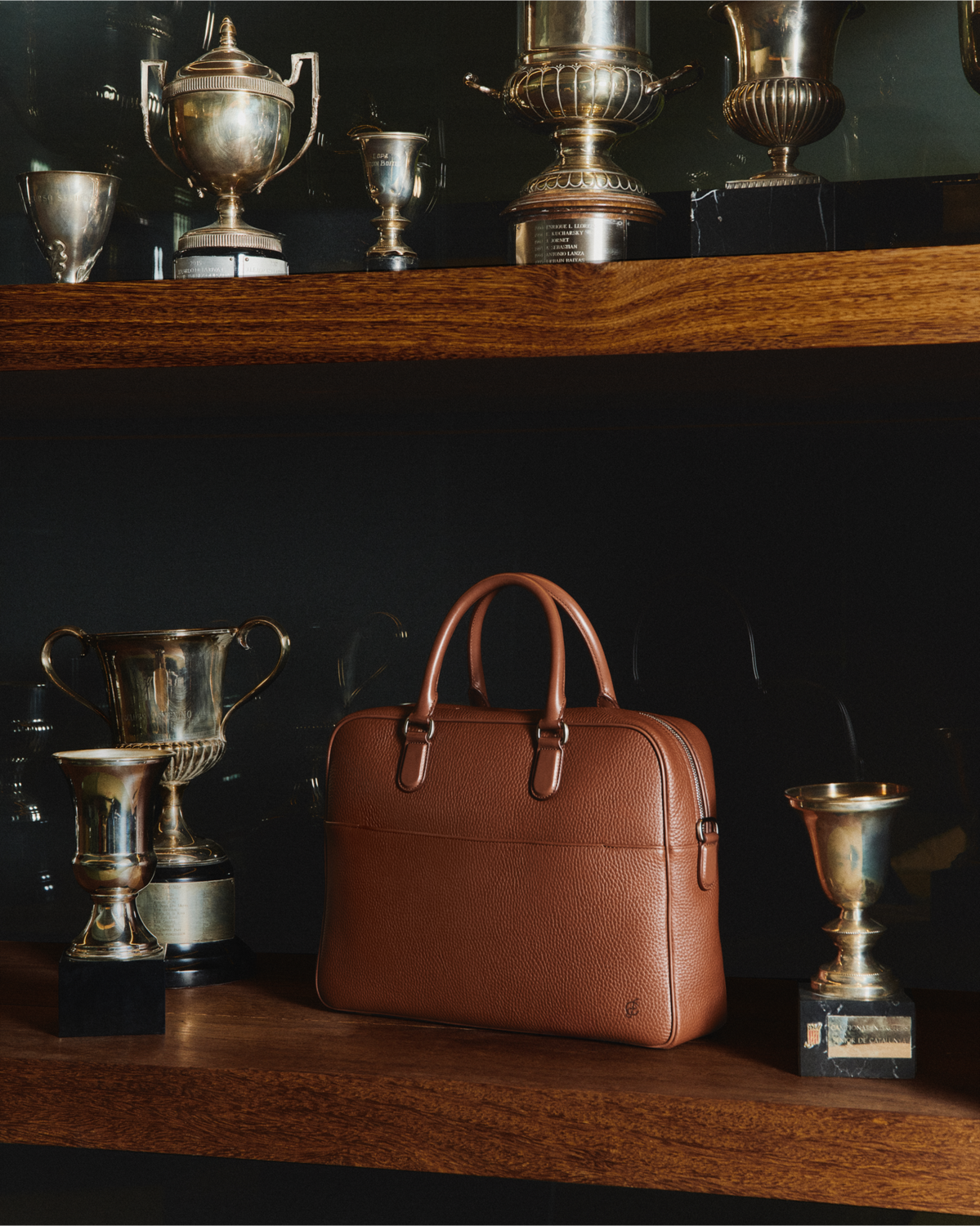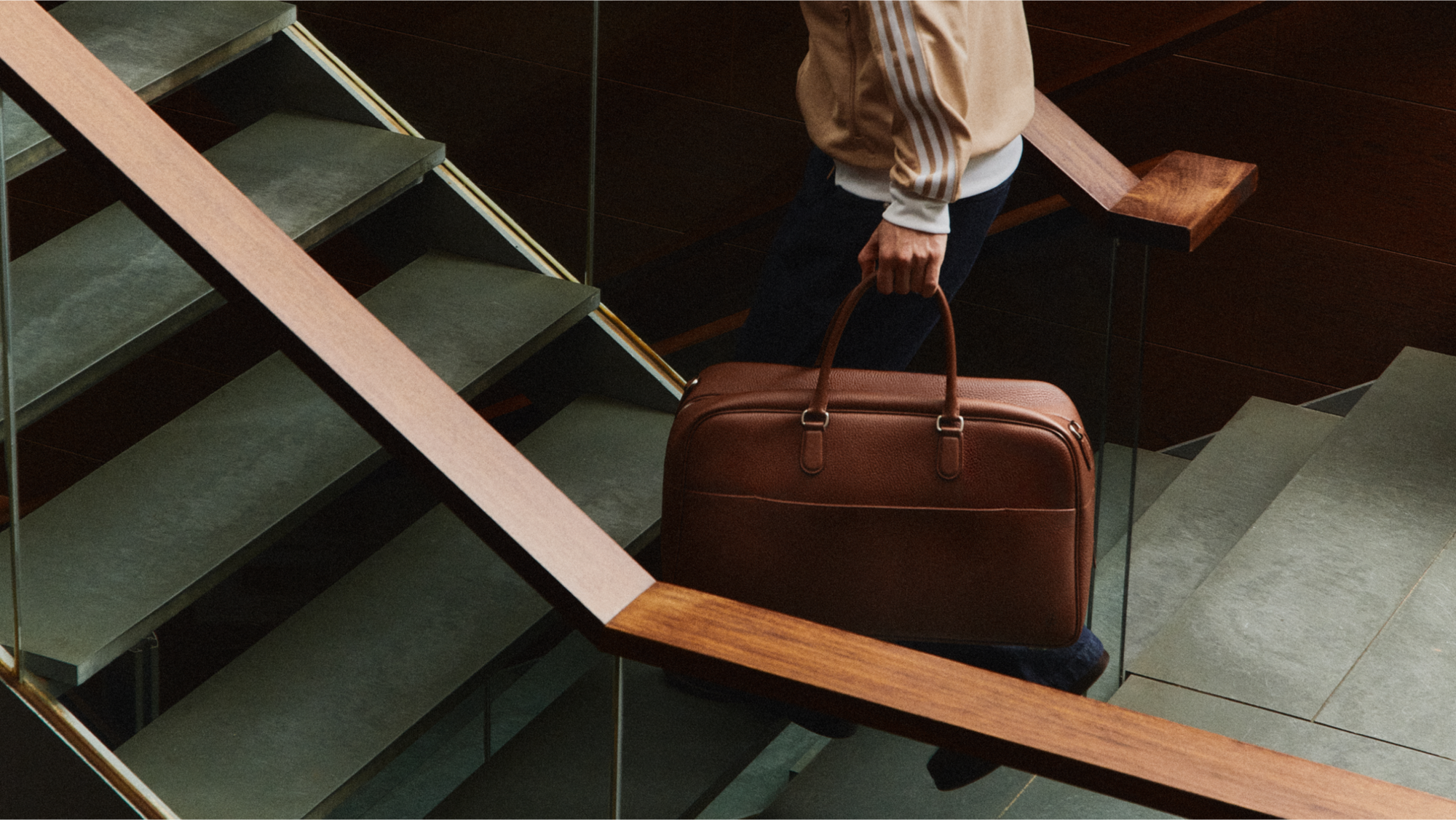Contents
Step 1: Swifty blot-dry the oily stain
Step 2: Apply absorbent powders to remove oil from leather
Step 3: Identifying the leather type before deep-cleaning a stubborn oil stain
Step 4: Deep cleaning to remove oil from leather
Step 5: Conditioning leather to restore its sheen
Common mistakes when removing an oil stain on leather
Why are oil stains on leather so stubborn?
Preventing future oil stains on leather
How to remove oil stains from leather safely
Step 1: Swifty blot-dry the oily stain
Navigate yourself to the kitchen to grab a dry microfibre cloth. The faster you finish these first crucial steps, the better.
- Lightly blot the oily stain to soak up what you can
- When your cloth gets wet, switch to a clean bit and continue
- Keep blotting until you can’t absorb any more oil
Don’t scrub the stain. A swirling or back-and-forth motion will only spread oil and worsen things.
Step 2: Apply absorbent powders to remove oil from leather
Now, take a deep breath and relax. The rest of the oil-cleansing process isn’t as time-sensitive. The next step is to rummage through the pantry to find an absorbent powder. Tried-and-tested favourites include cornstarch or baking soda.
These safe, non-abrasive powders contain fine, highly absorbent particles that penetrate deep into the leather fibres to soak up oil. You may need to repeat the below process several times for optimal results.
- Sprinkle a generous amount over the affected area to cover the entire stain
- Allow the powder to sit for several hours or even overnight
- Gently wipe the powder off with a soft-thistled brush or a dry cloth; never scrub

Ayrton Backpack
Step 3: Identifying the leather type before deep-cleaning a stubborn oil stain
Dry blotting and absorbent powder are the best first steps for getting oil out of any leather product. However, they won’t always eradicate stubborn splotches.
To completely eliminate oil stains, you may need to do deep cleaning — and the best method depends on the type of leather. You can always consult the manufacturer’s website to confirm what you’re working with.
Cleaning oil from full-grain leather
Full-grain leather is made from the upper layer of the hide. Although premium and durable, this fabric is susceptible to stains as it has a high degree of breathability.
Carefully treat the area with a commercial full-grain leather cleaner, following the instructions on the label. Avoid dish soaps and home remedies.
Cleaning oil from aniline leather
Aniline leather is a luxury, sealant-free material with soluble dyes that penetrate the hide to preserve the grain. As such, it’s delicate and somewhat sensitive to stains. Like full-grain leather, you should only use commercial aniline-cleaning products to neutralise the oil.
Cleaning oil from pigmented leather
Pigmented leather is an affordable, low-maintenance fabric buffed and treated to remove the natural grain. A potent protective sealant makes it suitable for most cleaning methods.
Clean pigmented leather with your choice of detergent, white vinegar or rubbing alcohol. Although famously tough, you must still avoid harsh household cleaning products.
Cleaning oil from suede or nubuck leather
Nubuck and suede are luxury leathers famed for their soft, velvety-like texture. Although relatively robust, neither can withstand liquid-based cleaners.
Be extra gentle when blotting, or you may spread the oil through the soft, fibrous surface. Reapply absorbent powders until you stop seeing improvements. If the stain remains, try a commercial nubuck or suede brush and cleaning kit.
Cleaning oil from patent leather
Patent leather is a glossy, high-shine fabric with a lustrous finish. A thick, protective lacquer coating shields patent leather from messy spills, making cleaning easy.
Cornstarch is the most effective absorbent powder here. If deep cleaning is required, dab the stain with a soft detergent-soaked cloth. Avoid harsh chemical cleaners.

Dunloe Briefcase
Step 4: Deep cleaning to remove oil from leather
You’ve blot-dried the stain, applied absorbent powder and identified the leather type and a suitable cleaner. Here’s a step-by-step guide for the deep-cleaning phase.
Removing oil with a commercial leather cleaner
Ensure you have the right product for your leather type. All commercial cleaning products differ, so read the manufacturer's instructions carefully.
- Test the cleaner on an inconspicuous section of the leather
- Apply the cleaner to the stain using a fresh microfibre cloth
- Rub gently in a circular motion (or per the manufacturer's instructions)
- Dab dry the affected area with a new, dry microfibre cloth
- Let the leather dry slowly at room temperature
Step 5: Conditioning leather to restore its sheen
Regardless of your treatment method, give the affected area a little post-clean care. Cleaning products lift oil from leather, including natural oils that generate a sleek, luxurious sheen.
The best oil-based leather conditioners absorb deep into the pores to replenish lost natural oil, preventing the fabric from cracking and preserving its soft, supple texture.
Don’t bother conditioning synthetics, such as Polyurethane leather (PU), as these are essentially plastics and don’t contain natural oils.
Common mistakes when removing an oil stain on leather
You don’t want to ruin your blue suede shoes through careless cleaning. Here’s what not to do when removing oil from leather.
- Delaying action: Blot-dry the stain immediately to minimise damage
- Making assumptions: Confirm the correct leather type before applying a cleaning solution or risk damaging the finish
- Soaking with water: Oil repels water, and excessive amounts will spoil many leather products
- Using unsuitable cleaners: White vinegar will destroy your sleek nubuck backpack in seconds
- Applying too much cleaner: Focus initially on a small portion of the oil-stained section
- Heating the stain: Heat will liquify the oil and make it easier to clean, but it will also wreck your leather
- Drying too quickly: Let the leather dry at room temperature, as excessive heat (including direct sunlight) could cause cracks
- Forceful treatment: Vigorous scrubbing will scratch the delicate surface — focus on soft dabs with a microfibre cloth
- Using harsh chemicals: Never consider abrasive cleaners like bleach, ammonia or acetone

Dunloe Briefcase
Why are oil stains on leather so stubborn?
Premium leather can be highly porous. Oils quickly penetrate the surface and seep deep into the fibres, creating unsightly, difficult-to-remove stains.
Oil is also hydrophobic. That means it won’t dissolve in water; a wet cloth wipe down won’t help at all.
What’s more, oil is semi-solid at room temperature. Once it’s soaked into the leather and had time to set, it’ll harden and cling to the fibres like glue. That makes it intensely difficult to remove without damaging the fabric. So don’t dally.
Preventing future oil stains on leather
The best way to remove oil from your leather accessories is not to tarnish it in the first place. Here’s a handful of helpful preventative measures.
- Apply a leather protecting product to create a shielding barrier
- Condition your leather to make it supple while adding an extra defensive layer
- Take care not to transfer oil onto leather through your hands, food or clothes
- Keep costly leather goods away from high-risk areas
How to remove oil stains from leather safely
It’s crucial to clean oil from leather correctly. Start dabbing the stain immediately with a dry towel, then apply (and reapply) an absorbent powder to soak up the grease.
If the stain remains, the next step is to identify the correct leather type and apply the most appropriate cleaning solution, following the advice in this guide.
Can I use vinegar or alcohol to remove oil from leather?
Should I recondition leather after removing oil stains?
Does removing an oil stain affect leather color?
The latest product news and travel guides? It's just a sign-up away.


